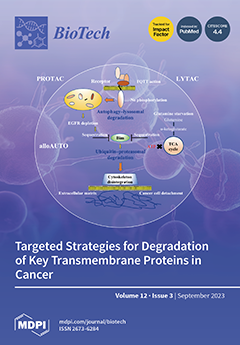Open AccessArticle
Characterization of Enzyme-Linked Immunosorbent Assay (ELISA) for Quantification of Antibodies against Salmonella Typhimurium and Salmonella Enteritidis O-Antigens in Human Sera
by
Maria Grazia Aruta, Elisa Lari, Daniele De Simone, Bianca Semplici, Claudia Semplici, Helen Dale, Esmelda Chirwa, Innocent Kadwala, Maurice Mbewe, Happy Banda, Miren Iturriza-Gomara, Melita Gordon, Tonney Nyirenda, Pietro Piu, Mariagrazia Pizza, Francesco Berlanda Scorza, Silvia Grappi, Rocío Canals, Omar Rossi and on behalf of the Vacc-iNTS Consortium Collaborators
Viewed by 2506
Abstract
Nontyphoidal Salmonella (NTS) is a leading cause of morbidity and mortality caused by enteric pathogens worldwide in both children and adults, and vaccines are not yet available. The measurement of antigen-specific antibodies in the sera of vaccinated or convalescent individuals is crucial to
[...] Read more.
Nontyphoidal Salmonella (NTS) is a leading cause of morbidity and mortality caused by enteric pathogens worldwide in both children and adults, and vaccines are not yet available. The measurement of antigen-specific antibodies in the sera of vaccinated or convalescent individuals is crucial to understand the incidence of disease and the immunogenicity of vaccine candidates. A solid and standardized assay used to determine the level of specific anti-antigens IgG is therefore of paramount importance. In this work, we presented the characterization of a customized enzyme-linked immunosorbent assay (ELISA) with continuous readouts and a standardized definition of EU/mL. We assessed various performance parameters: standard curve accuracy, dilutional linearity, intermediate precision, specificity, limits of blanks, and quantification. The simplicity of the assay, its high sensitivity and specificity coupled with its low cost and the use of basic consumables and instruments without the need of high automation makes it suitable for transfer and application to different laboratories, including resource-limiting settings where the disease is endemic. This ELISA is, therefore, fit for purpose to be used for quantification of antibodies against
Salmonella Typhimurium and
Salmonella Enteritidis O-antigens in human samples, both for vaccine clinical trials and large sero-epidemiological studies.
Full article
►▼
Show Figures






